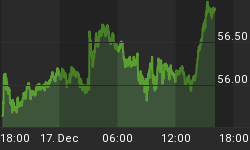The Fed's creation of various facilities in recent months - the Term Auction Facility (TAF) for depository institutions, the Term Securities Lending Facility (TSLF) for primary government securities dealers and the Primary Dealers Credit Facility (PDCF) - would be expected to alleviate some institutional liquidity issues that otherwise could metastasize into institutional solvency issues. Commercial and investment banks now can borrow against seemingly credit-worthy collateral with a much smaller "haircut" than otherwise. The Fed has created these new liquidity facilities in order to forestall a systemic failure of the financial system, not to enhance financial institution shareholder value.
A byproduct of the new Fed liquidity facilities, however, undoubtedly has been to enhance financial institutions' shareholder value - perhaps save for one. By the Fed taking onto its balance sheet less creditworthy collateral as result of these new facilities, U.S. taxpayers have increased contingent liabilities. (The Fed turns over to the Treasury each year the bulk of its profits. If the Fed were to sustain losses on its collateral, the amount of profits it turned over to the Treasury would be reduced.) Why should the current shareholders of financial institutions benefit at the expense of U.S. taxpayers in general?
In a case where man bites dog, it appears as though the Fed and the Treasury may be looking out for the interests of the U.S. taxpayer. Publicly, both Fed and Treasury officials have urged financial institutions to raise additional capital post haste. I am not privy to private conversations, but I would hope Fed and Treasury officials are directly communicating to the CEOs of large financial institutions with "skinny" capital positions that they will raise more capital. By raising more capital, the contingent liabilities of U.S. taxpayers will be reduced and the existing shareholders of these large financial institutions will bear some of the social costs of these new Fed facilities through a dilution of their ownership in the financial institutions.















